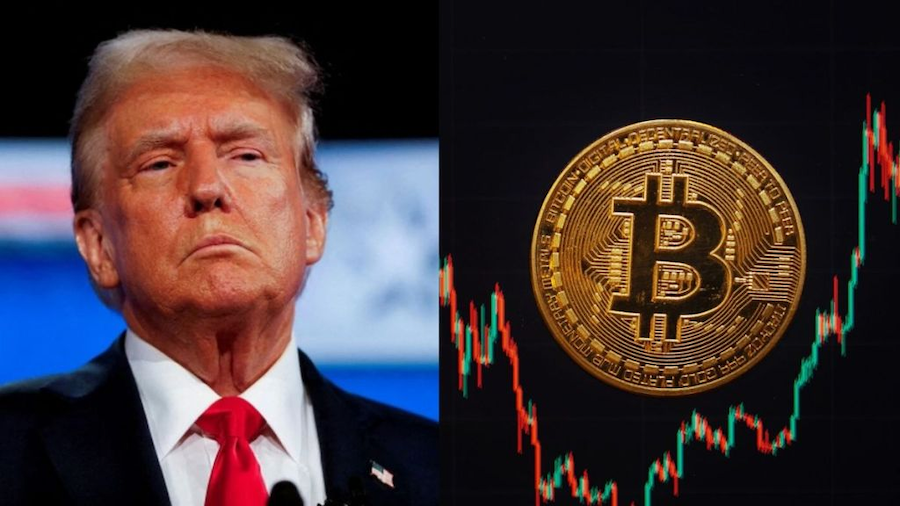- The US dollar retreats after reaching its highest level following labor and inflation data.
- U.S. citizens’ unemployment insurance claims last week came in below expectations.
- The overall PPI for October stood at 2.4%, higher than expected.
The US Dollar Index (DXY), a measure of the value of the USD against a basket of six currencies, softened after hitting a new yearly high near 107.00. The dollar has been rising in recent days, but profit taking and disappointing US economic data have led to a slight pullback. The October headline Producer Price Index (PPI) stood at 2.4% year-on-year, above expectations of 2.3%, and the PPI excluding Food and Energy rose to 3.1% year-on-year, also beating expectations.
Additionally, unemployment insurance claims from US citizens were reported at 217,000 for the week ending November 9, which was below expectations of 223,000.
Daily Market Summary: US Dollar Softens After Hitting New Yearly High on Profit-Taking and Economic Data
- Initial US jobless claims rose to 217,000 in the week ending November 9, below estimates of 223,000 and 221,000 the previous week.
- The seasonally adjusted insured unemployment rate remained at 1.2%, while the four-week moving average decreased to 221,000.
- The headline PPI in the US rose 2.4% year-on-year in October, beating estimates and marking a significant increase from September’s revised 1.9%.
- Excluding Food and Energy, the PPI increased 3.1% year-on-year, higher than expected and from the previous reading of 2.9%.
- On a monthly basis, headline PPI and core PPI rose 0.2% and 0.3%, respectively, meeting expectations but higher than the previous rate.
DXY Technical Outlook: Index Shows Bullish Momentum, But Overbought Indicators Warn Caution
Technical analysis of the DXY Index indicates an increase in momentum, driven by strong gains in the Relative Strength Index (RSI) and Moving Average Convergence/Divergence (MACD). However, as these indicators approach overbought territory, the DXY could enter a period of consolidation.
The recent rise and subsequent pullback in the DXY suggests that buyers could be taking profits after a strong rally. This could indicate a possible reversal or consolidation in the short term. The 107.00 level has acted as strong resistance, and its inability to break on a sustained basis could add weight to the notion of a pullback.
The US Dollar FAQs
The United States Dollar (USD) is the official currency of the United States of America, and the “de facto” currency of a significant number of other countries where it is in circulation alongside local banknotes. According to 2022 data, it is the most traded currency in the world, with more than 88% of all global currency exchange operations, equivalent to an average of $6.6 trillion in daily transactions. After World War II, the USD took over from the pound sterling as the world’s reserve currency.
The single most important factor influencing the value of the US Dollar is monetary policy, which is determined by the Federal Reserve (Fed). The Fed has two mandates: achieve price stability (control inflation) and promote full employment. Your main tool to achieve these two objectives is to adjust interest rates. When prices rise too quickly and inflation exceeds the 2% target set by the Fed, the Fed raises rates, which favors the price of the dollar. When Inflation falls below 2% or the unemployment rate is too high, the Fed can lower interest rates, which weighs on the Dollar.
In extreme situations, the Federal Reserve can also print more dollars and enact quantitative easing (QE). QE is the process by which the Fed substantially increases the flow of credit into a clogged financial system. This is an unconventional policy measure used when credit has dried up because banks do not lend to each other (for fear of counterparty default). It is a last resort when a simple lowering of interest rates is unlikely to achieve the necessary result. It was the Fed’s weapon of choice to combat the credit crunch that occurred during the Great Financial Crisis of 2008. It involves the Fed printing more dollars and using them to buy US government bonds, primarily from financial institutions. QE usually leads to a weakening of the US Dollar.
Quantitative tightening (QT) is the reverse process by which the Federal Reserve stops purchasing bonds from financial institutions and does not reinvest the principal of maturing portfolio securities in new purchases. It is usually positive for the US dollar.
Source: Fx Street
I am Joshua Winder, a senior-level journalist and editor at World Stock Market. I specialize in covering news related to the stock market and economic trends. With more than 8 years of experience in this field, I have become an expert in financial reporting.







